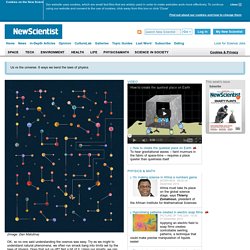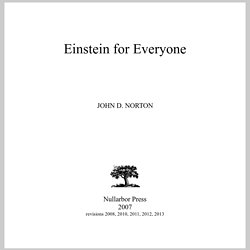

Matter. Before the 20th century, the term matter included ordinary matter composed of atoms and excluded other energy phenomena such as light or sound.

This concept of matter may be generalized from atoms to include any objects having mass even when at rest, but this is ill-defined because an object's mass can arise from its (possibly massless) constituents' motion and interaction energies. Thus, matter does not have a universal definition, nor is it a fundamental concept in physics today. Matter is also used loosely as a general term for the substance that makes up all observable physical objects.[1][2] All the objects from everyday life that we can bump into, touch or squeeze are composed of atoms.
This atomic matter is in turn made up of interacting subatomic particles—usually a nucleus of protons and neutrons, and a cloud of orbiting electrons.[3][4] Typically, science considers these composite particles matter because they have both rest mass and volume. Definition Common definition. Here's How You Can Help Scientists Study Sex, Whales, and Distant Galaxies.
"There is so much we don't know!

" said Dick Vane-Wright, the Keeper of Entomology at the London Museum of Natural History when author Sharman Apt Russell was asking about butterflies. "You could spend a week studying some obscure insect and you would then know more than anyone else on the planet. Our ignorance is profound. " Russell was so inspired by this conversation—which appears in her book Diary of a Citizen Scientist (read an excerpt published by Orion Magazine)—that she became an expert on tiger beetles.
New Sciences. SCIENCE.
Cosmos, Moby’s Song ‘We Are All Made of Stars’, Universe & Solar System. The theory that everyone and everything on Earth contains minuscule star particles dates back further than Moby's popular 2002 song "We Are All Made of Stars.

" In the early 1980s, astronomer Carl Sagan hosted and narrated a 13-part television series called "Cosmos" that aired on PBS. On the show, Sagan thoroughly explained many science-related topics, including Earth's history, evolution, the origin of life and the solar system. "We are a way for the universe to know itself. Us vs the universe: 8 ways we bend the laws of physics. Cookies on the New Scientist website close Our website uses cookies, which are small text files that are widely used in order to make websites work more effectively.

To continue using our website and consent to the use of cookies, click away from this box or click 'Close' Find out about our cookies and how to change them Log in Your login is case sensitive I have forgotten my password close My New Scientist Look for Science Jobs. 10 Reasons Why Our Universe Is A Virtual Reality. Our World Physical realism is the view that the physical world we see is real and exists by itself, alone.

Most people think this is self-evident, but physical realism has been struggling with the facts of physics for some time now. The paradoxes that baffled physics last century still baffle it today, and its great hopes of string theory and supersymmetry aren’t leading anywhere. Fractal Universe. The Daily Galaxy. In February, 1971, Apollo 14 astronaut Edgar Mitchell experienced the little understood phenomenon sometimes called the “Overview Effect”.

He describes being completely engulfed by a profound sense of universal connectedness. Without warning, he says, a feeing of bliss, timelessness, and connectedness began to overwhelm him. He describes becoming instantly and profoundly aware that each of his constituent atoms were connected to the fragile planet he saw in the window and to every other atom in the Universe.
Oceana Currents. Dynamic Periodic Table. Himawari-8, le nouveau satellite météo japonais, prend la Terre en photo et en vraies couleurs ! Land Water BioMass. Computer Physics Lab. Gini coefficient. Gini coefficient of national income distribution around the world.

This is based on 1989 to 2009 data, estimated by the CIA. Some are pre-tax and transfer, others post-tax income. The Gini coefficient (also known as the Gini index or Gini ratio) (/dʒini/) is a measure of statistical dispersion intended to represent the income distribution of a nation's residents. It was developed by the Italian statistician and sociologist Corrado Gini and published in his 1912 paper "Variability and Mutability" (Italian: Variabilità e mutabilità).[1][2] The Gini coefficient measures the inequality among values of a frequency distribution (for example levels of income).
There are some issues in interpreting a Gini coefficient. Definition[edit] Graphical representation of the Gini coefficient The graph shows that the Gini coefficient is equal to the area marked A divided by the sum of the areas marked A and B. that is, Gini = A / (A + B). Calculation[edit] Sixty Symbols - Physics and Astronomy videos. Einstein for Everyone. Einstein for Everyone Nullarbor Press 2007revisions 2008, 2010, 2011, 2012, 2013 Copyright 2007, 2008, 2010, 2011, 2012, 2013 John D.

Norton Published by Nullarbor Press, 500 Fifth Avenue, Pittsburgh, Pennsylvania 15260 with offices in Liberty Ave., Pittsburgh, Pennsylvania, 15222 All Rights Reserved John D. An advanced sequel is planned in this series:Einstein for Almost Everyone 2 4 6 8 9 7 5 3 1 ePrinted in the United States of America no trees were harmed. The Tesla Files. Immanuel Velikovsky. REALLY GOOD STUFF.